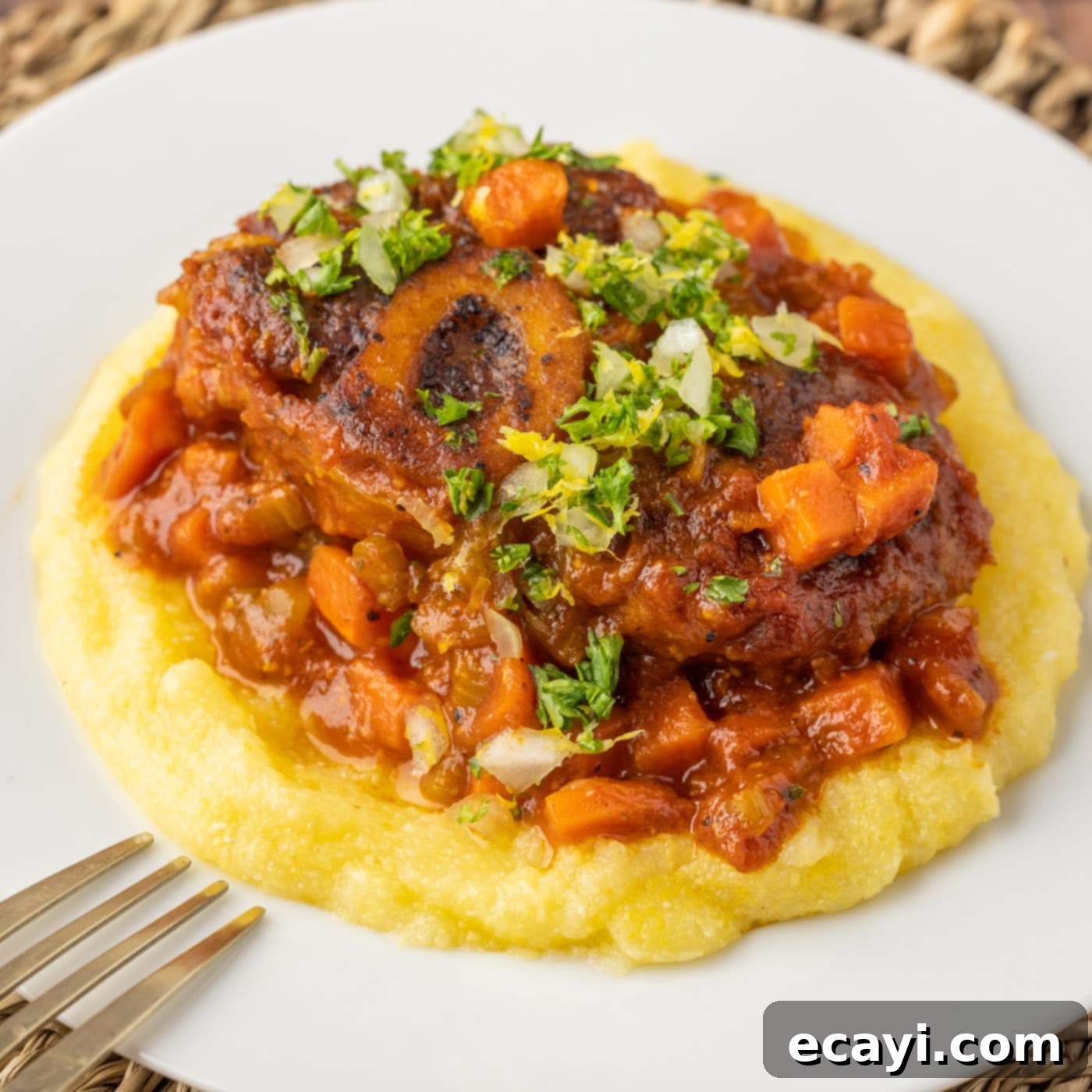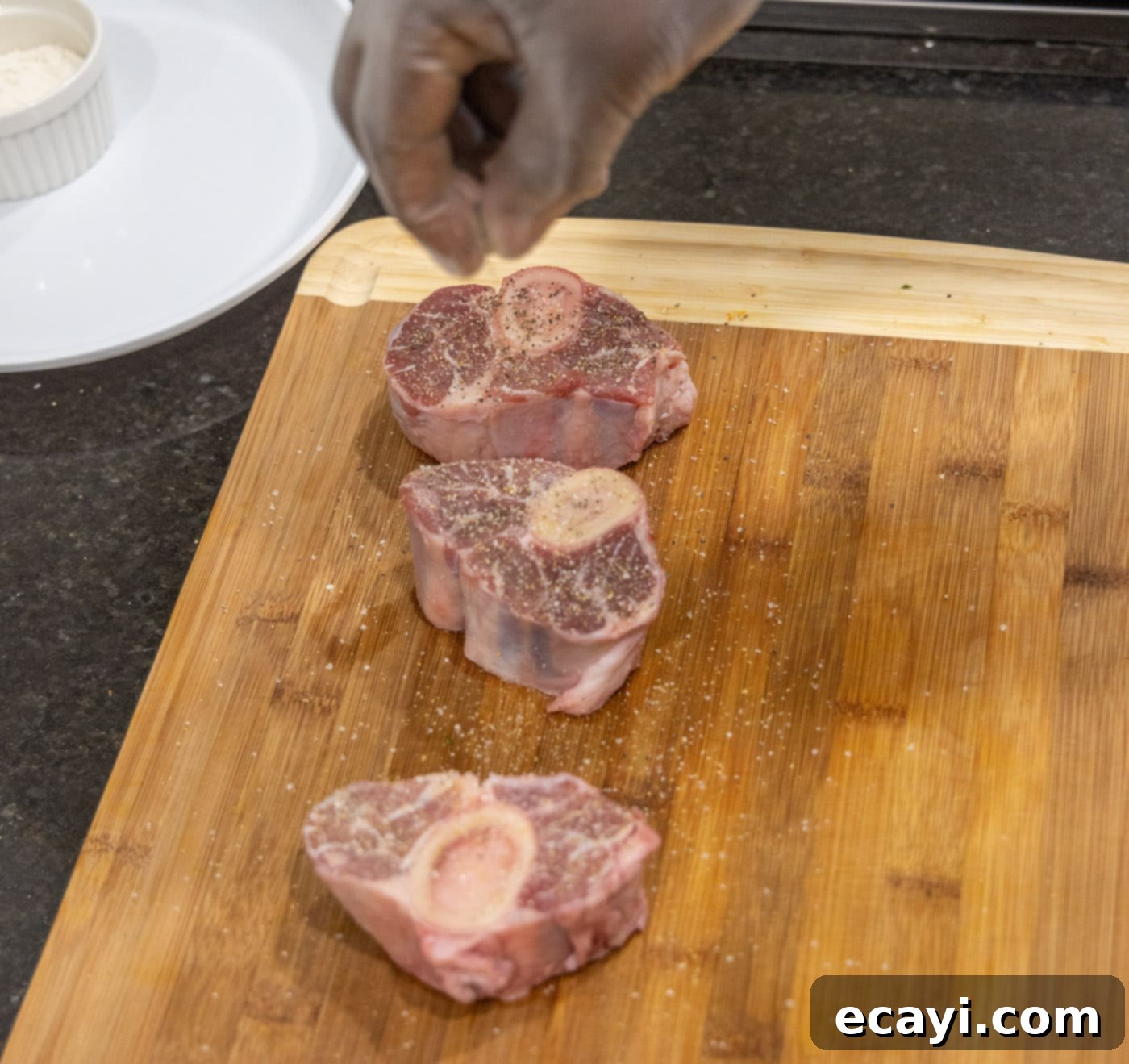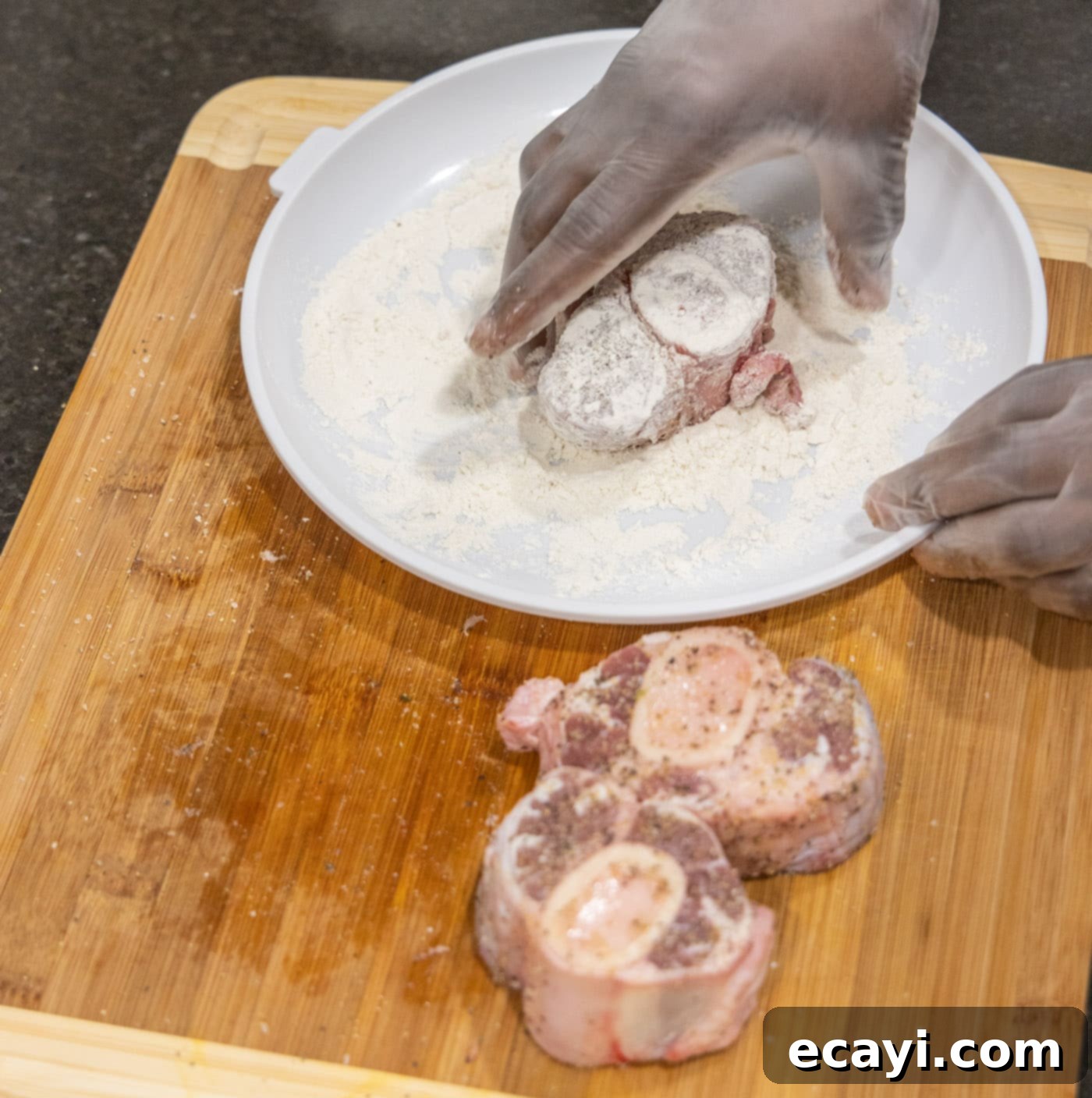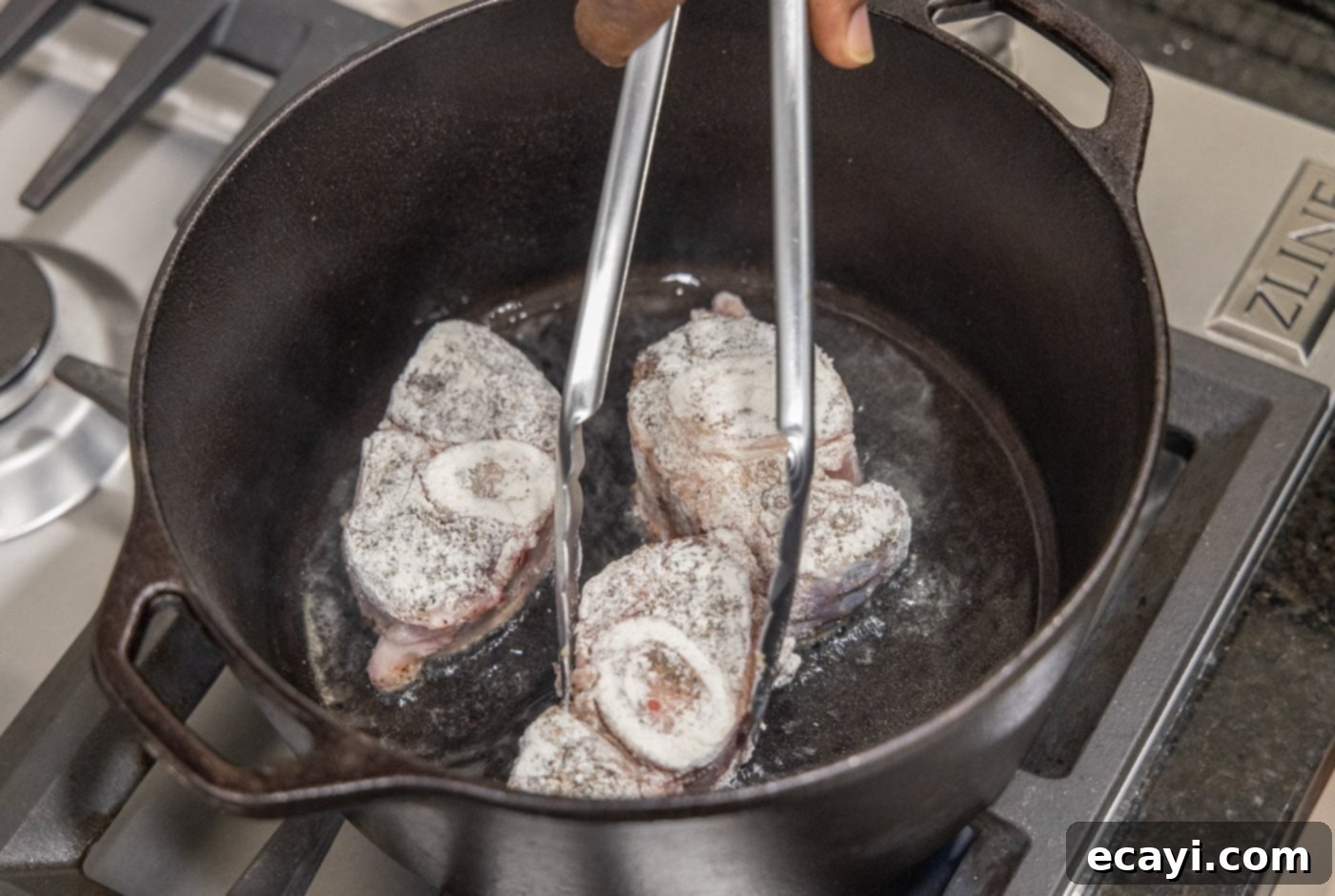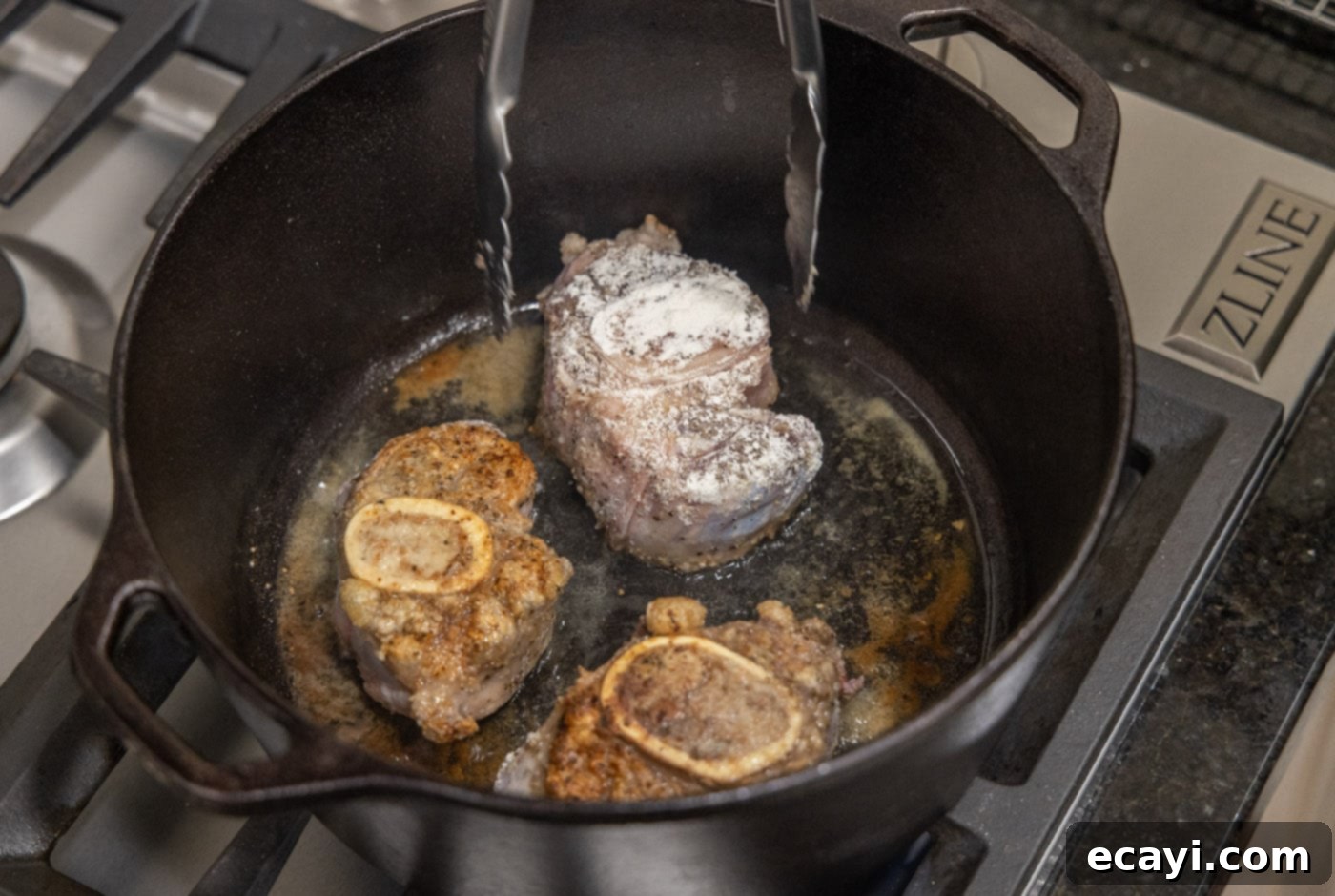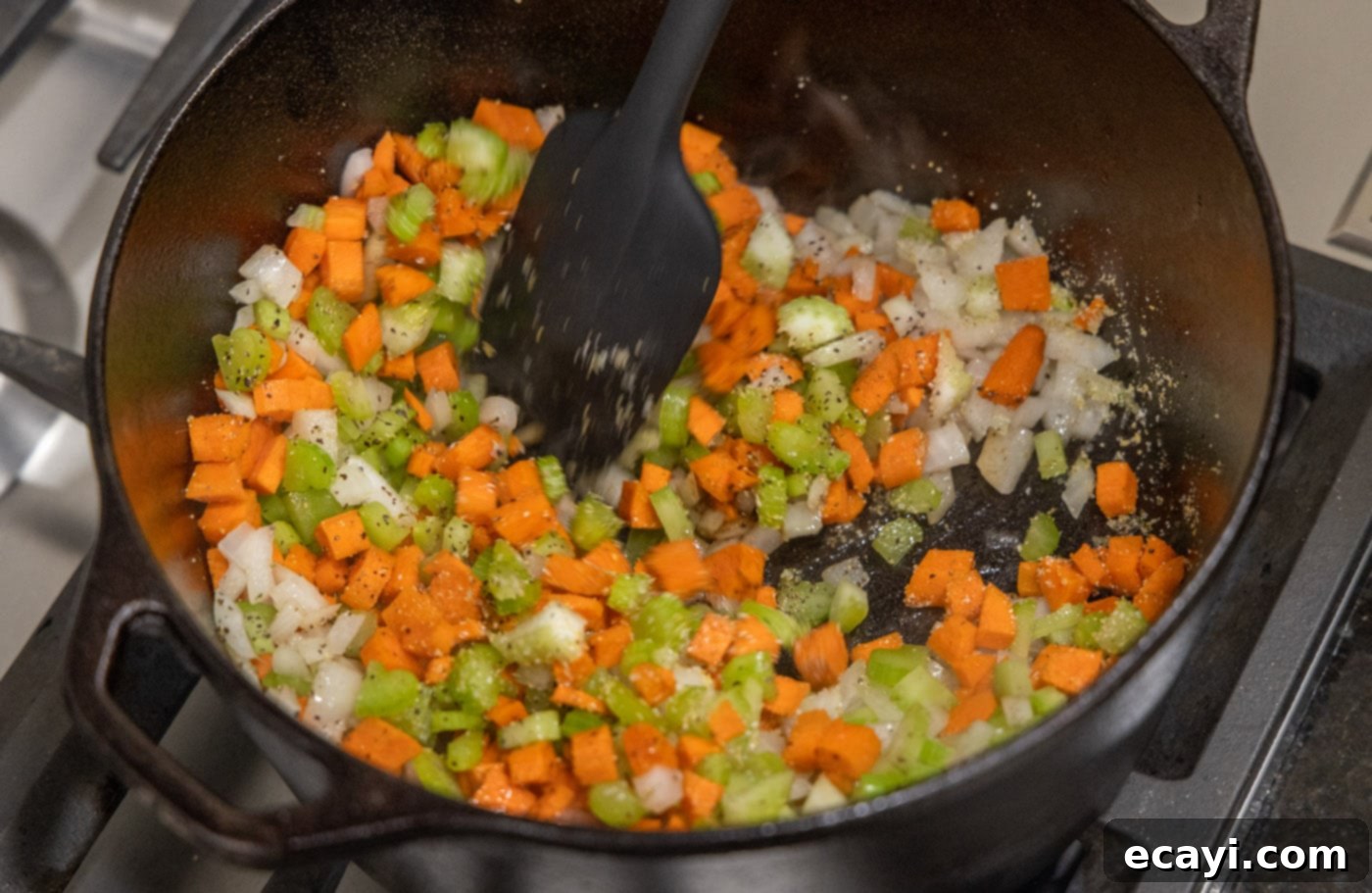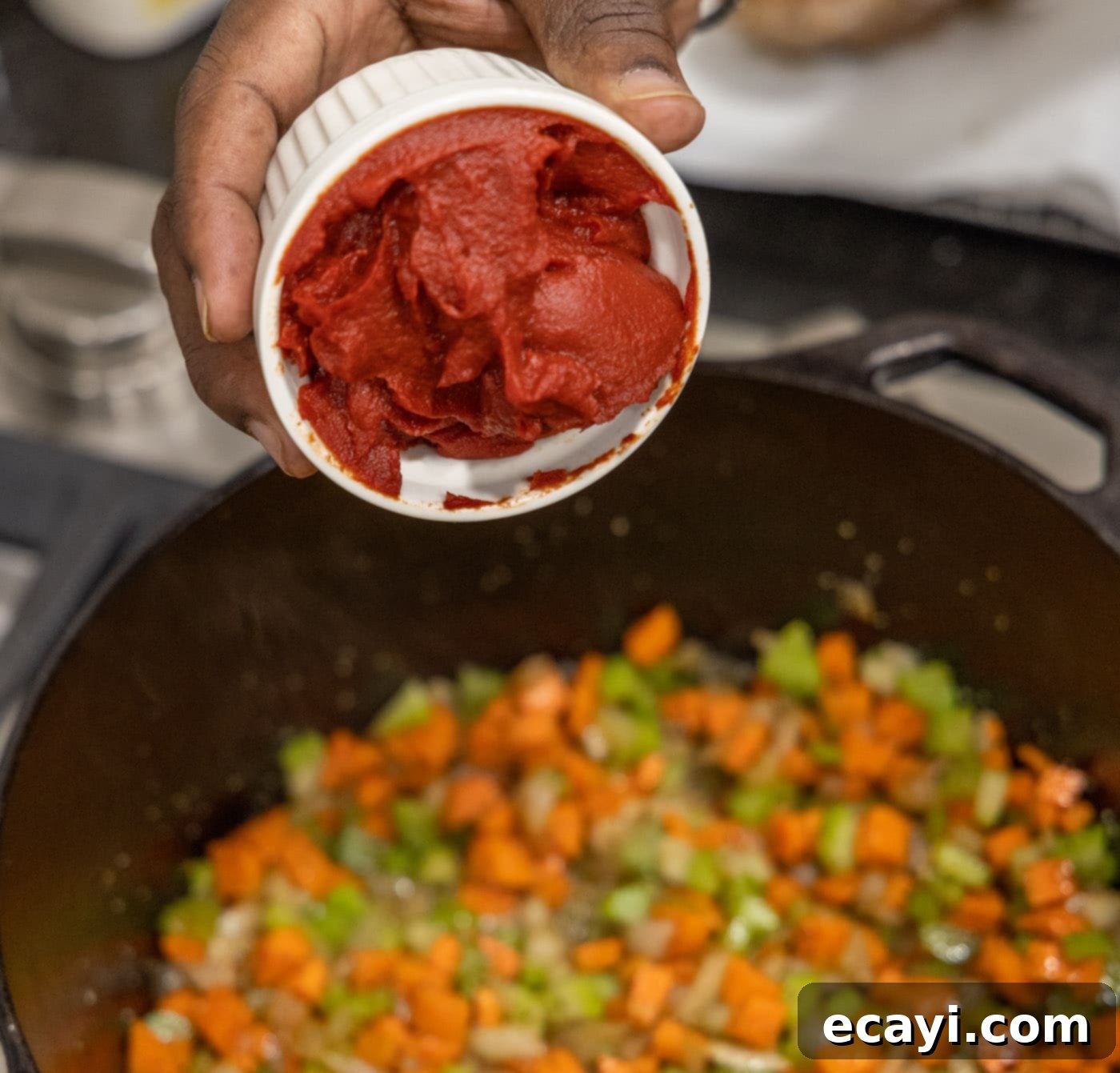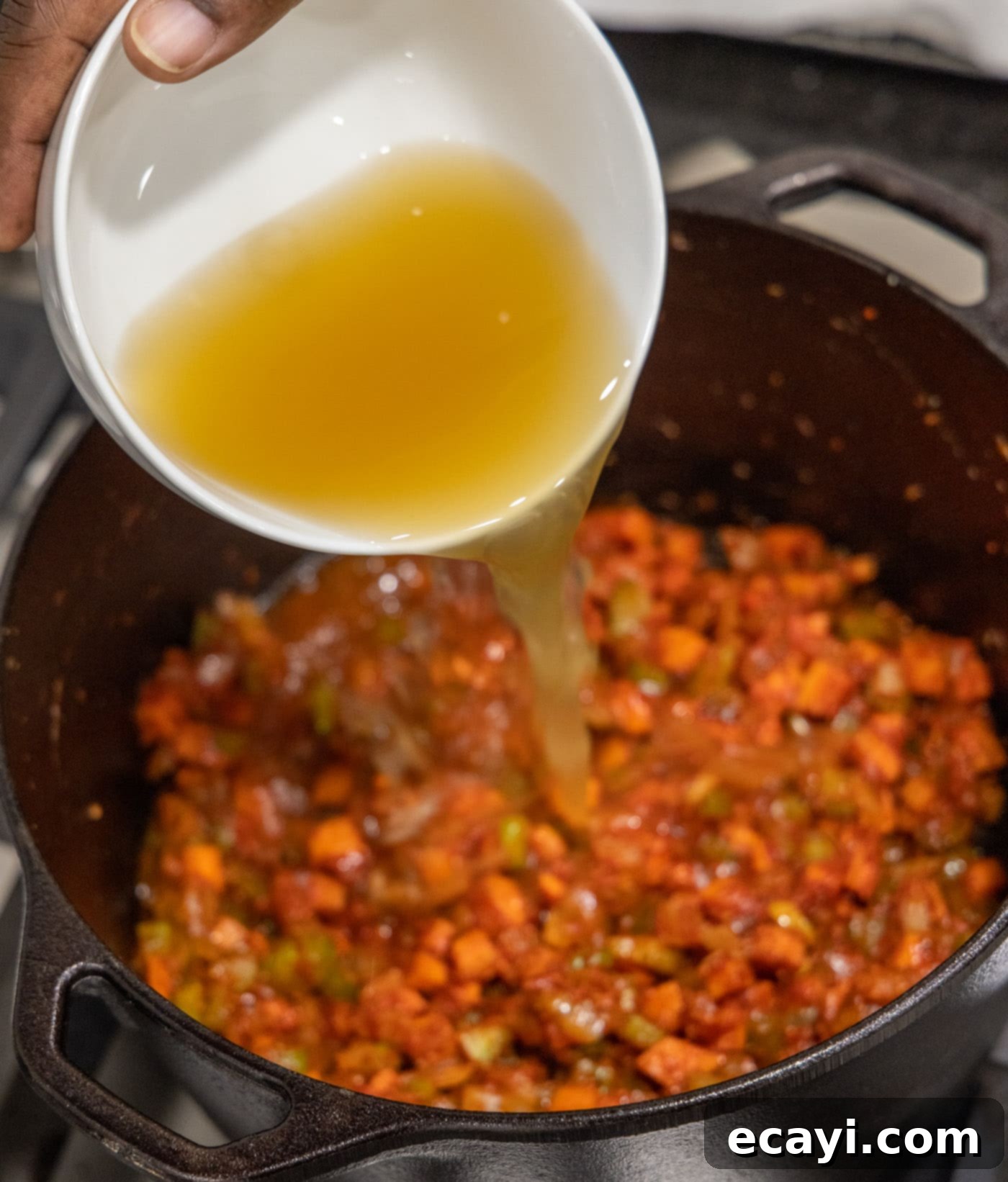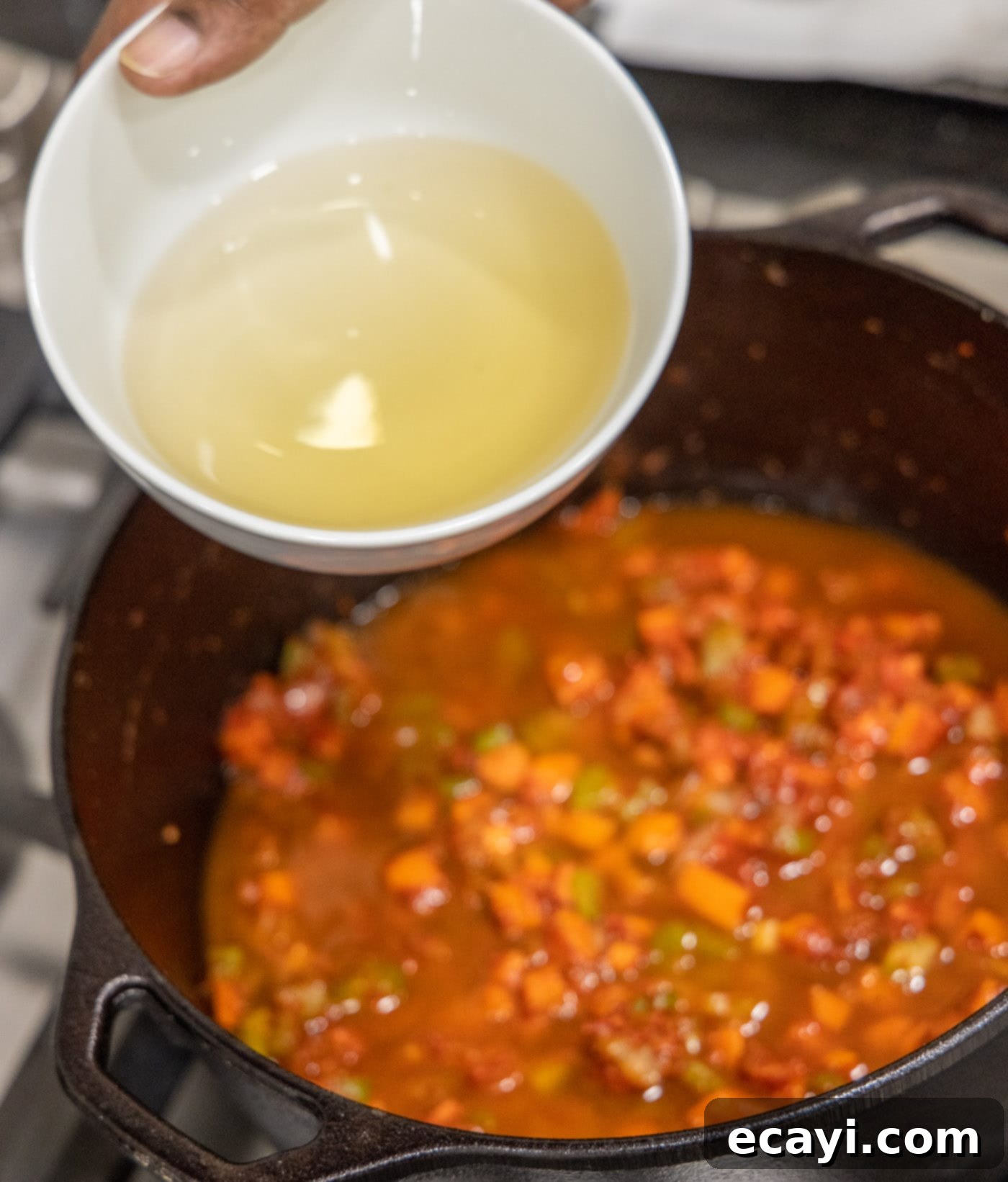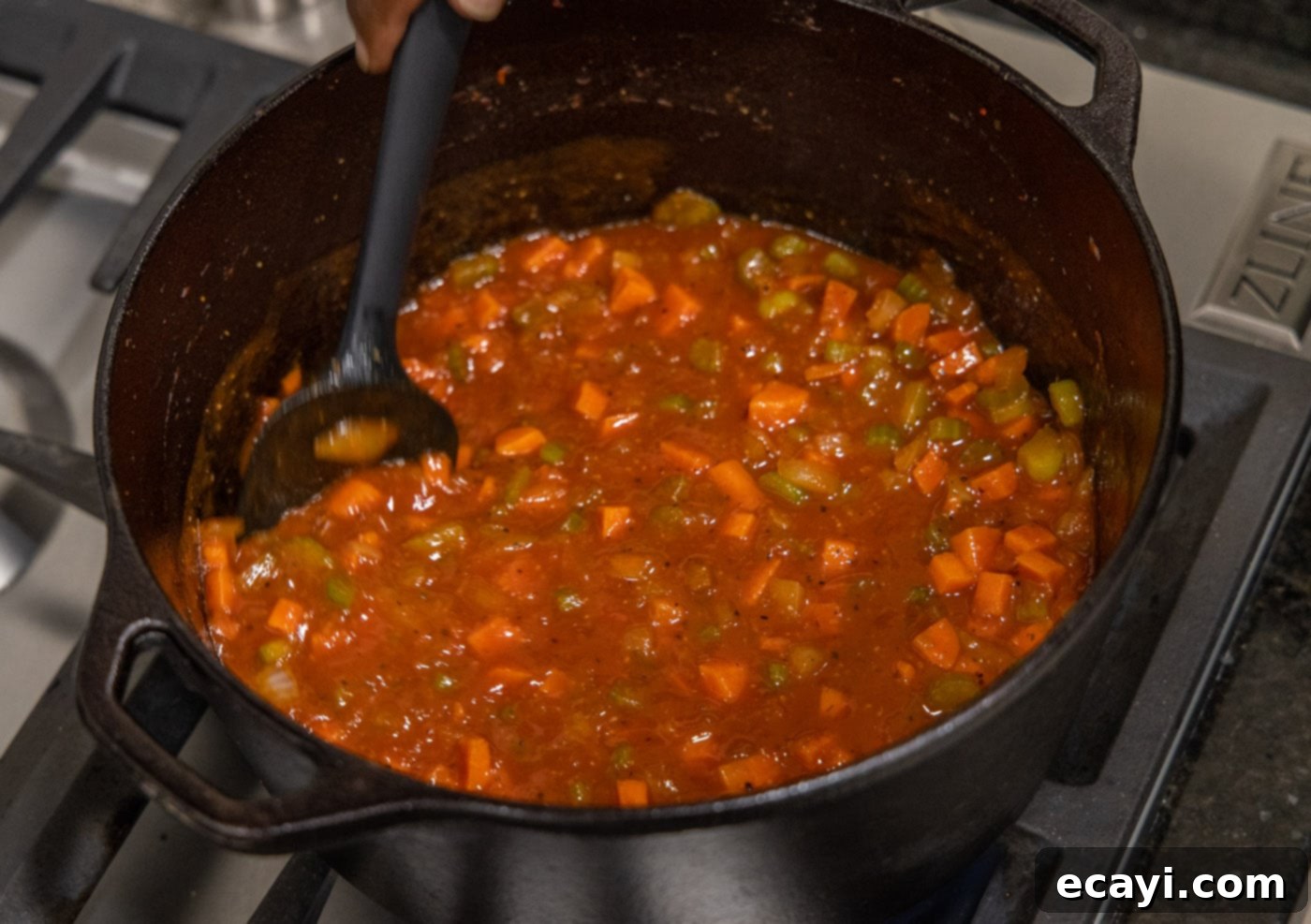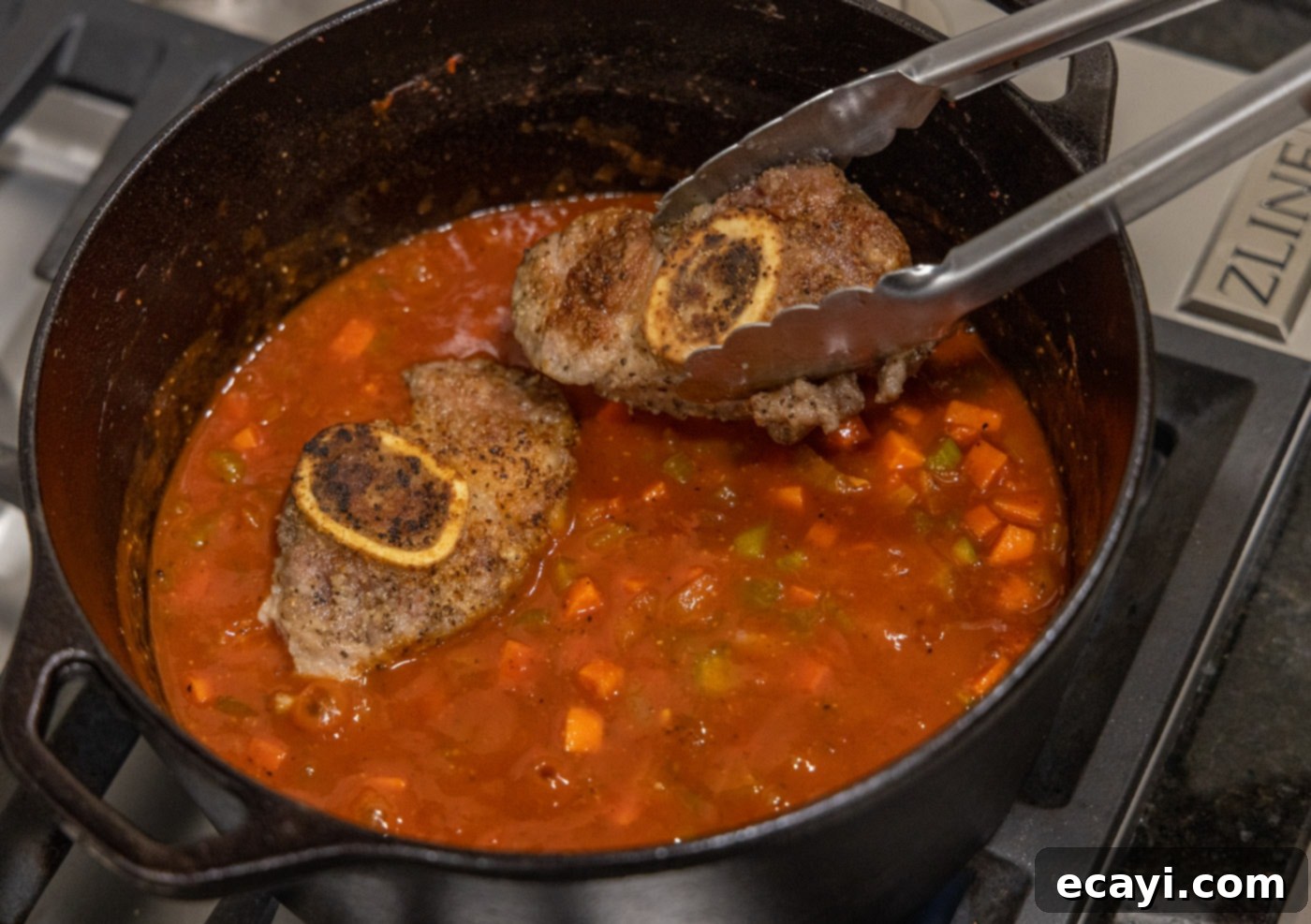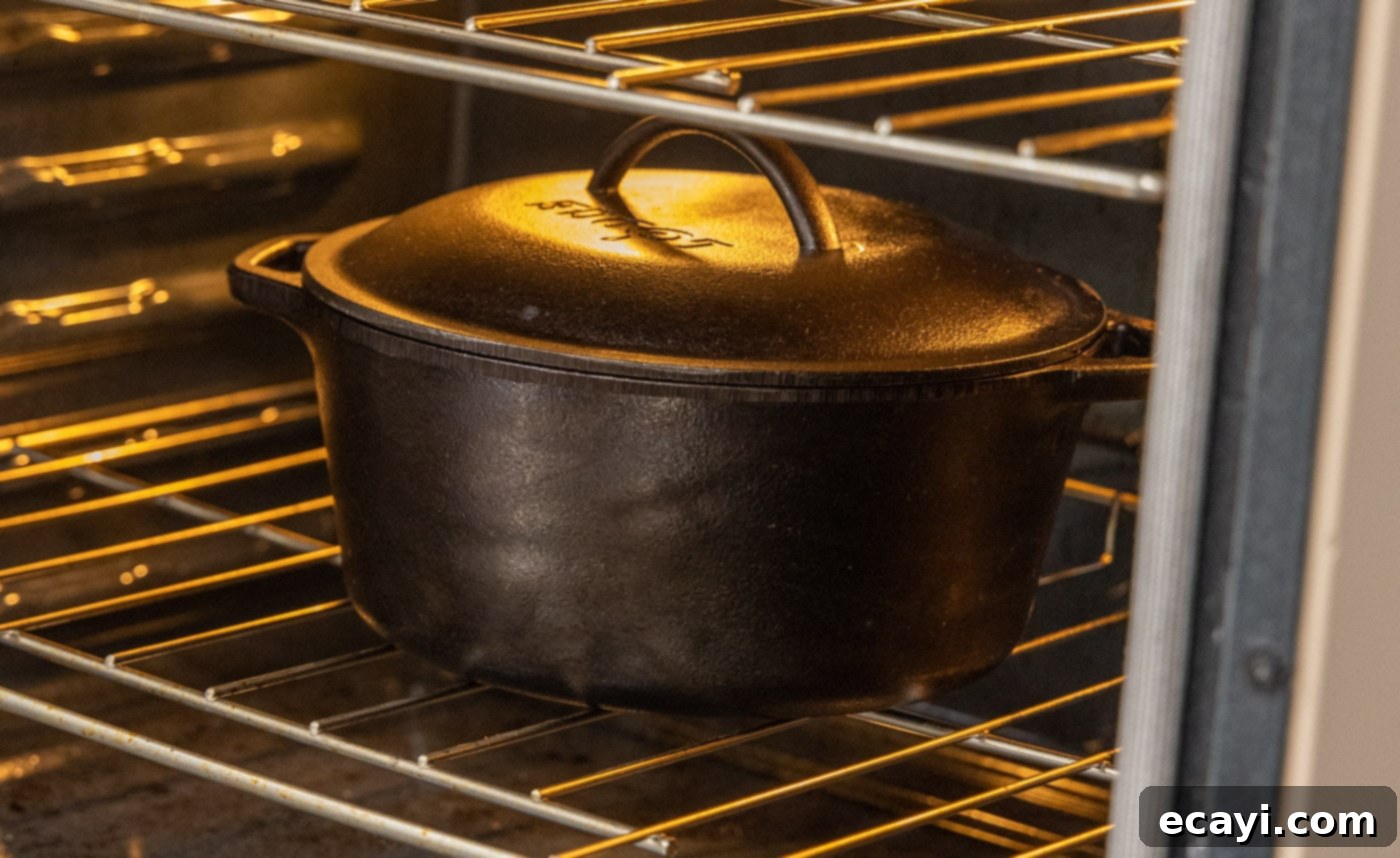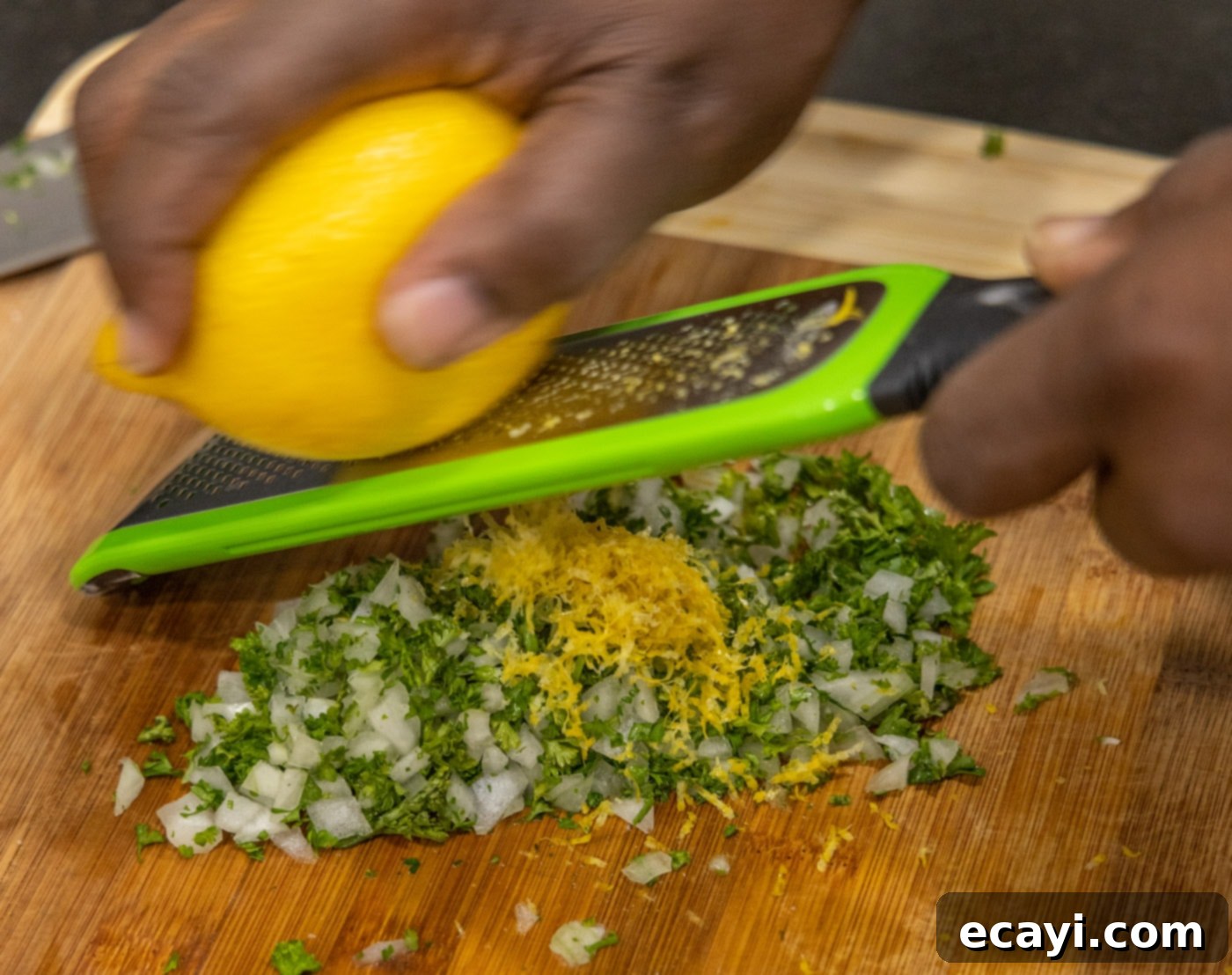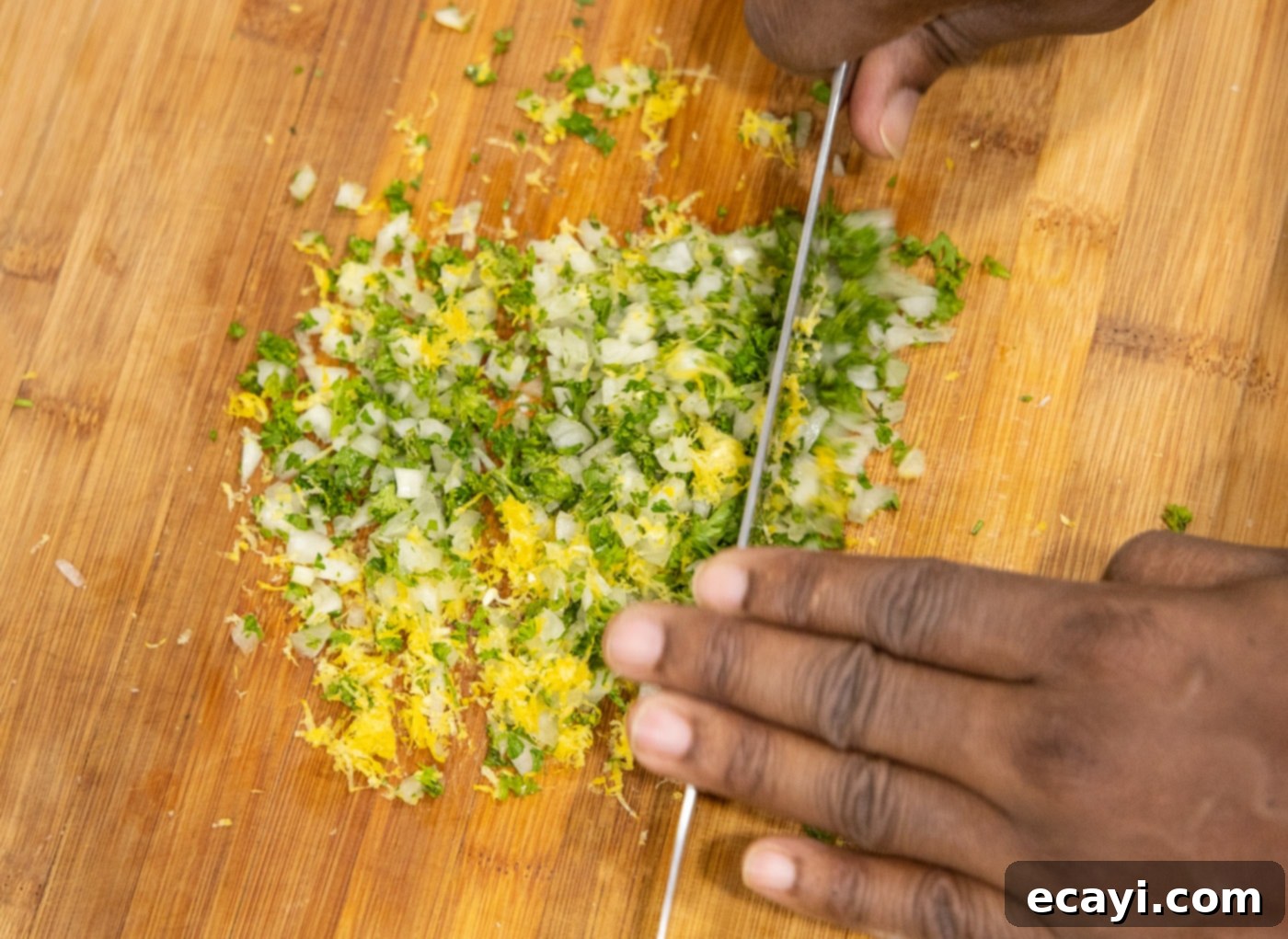Braised Veal Osso Buco: An Authentic Italian Recipe for Fall-Apart Tender Veal Shanks
Prepare to impress with this incredible Veal Osso Buco recipe, where succulent veal shanks are slow-cooked to perfection in the oven alongside aromatic vegetables, creating an intensely rich and deeply flavorful dish. Each bite offers fall-apart tender meat that practically melts in your mouth, infused with the comforting essence of Italian cuisine. To elevate this classic, we crown it with a vibrant, refreshing gremolata, providing a bright contrast that cuts through the richness and completes the culinary experience.
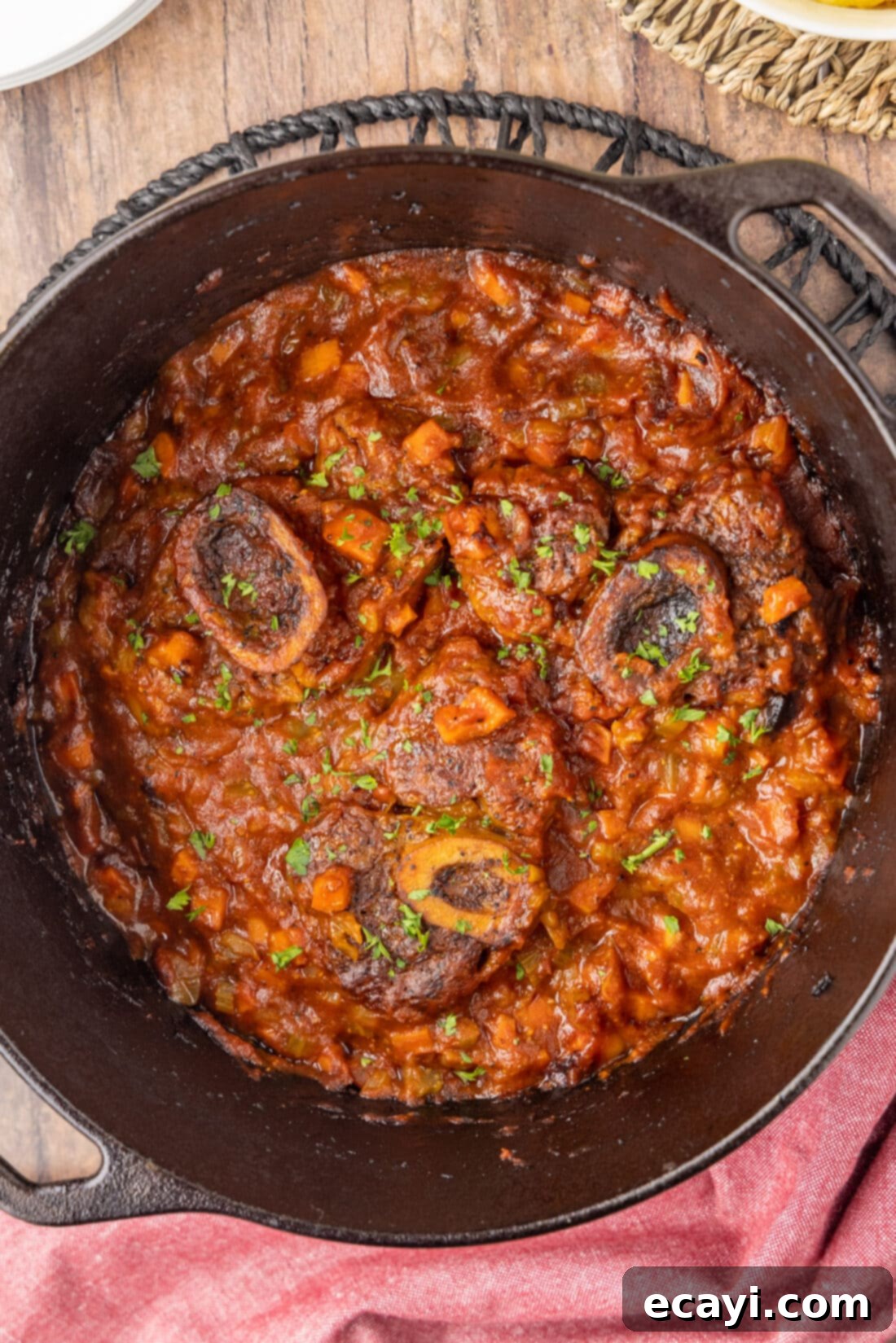
Why This Veal Osso Buco Recipe is a Must-Try
Veal Osso Buco is more than just a meal; it’s a testament to the magic of traditional Italian cooking. This renowned dish transforms humble cross-cut veal shanks into a luxurious, deeply satisfying experience through the art of braising. Our recipe follows the time-honored method: first, the veal shanks are lightly dredged in flour and seared to develop a beautiful golden-brown crust, locking in their natural juices and building foundational flavor. They are then slow-cooked in the oven with a fragrant mirepoix of diced onions, celery, and carrots, combined with rich white wine, concentrated tomato paste, and savory chicken stock.
The secret to its unparalleled tenderness lies in the extended, low-temperature braising process. This gentle heat allows the connective tissues in the veal shanks to slowly break down, resulting in meat that is incredibly moist, gelatinous, and so tender it falls off the bone. This long and slow method not only tenderizes the meat but also creates a profoundly rich, deeply savory sauce that coats every morsel. The bone marrow, a delicacy hidden within the shanks, also renders during cooking, adding an incomparable depth of flavor and silky texture to the sauce. This tender, melt-in-your-mouth veal is the perfect canvas for a bright and herby gremolata—a classic Italian condiment made from fresh parsley, minced garlic (which we’ll replace with finely diced onion for a slightly different take), and invigorating lemon zest. The vibrant freshness of the gremolata provides a delightful counterpoint to the rich braised meat, creating a perfectly balanced dish that is both comforting and sophisticated.
Opting for veal shanks is a smart choice for both flavor and value. While often less expensive than cuts like veal chops, the flavor derived from the slow-cooking process of shanks is arguably even more impressive, yielding a depth and succulence that high-end cuts can’t always match without proper preparation. This recipe truly unlocks the full potential of this underappreciated cut of meat, making it a centerpiece for any special occasion or a comforting weeknight dinner.
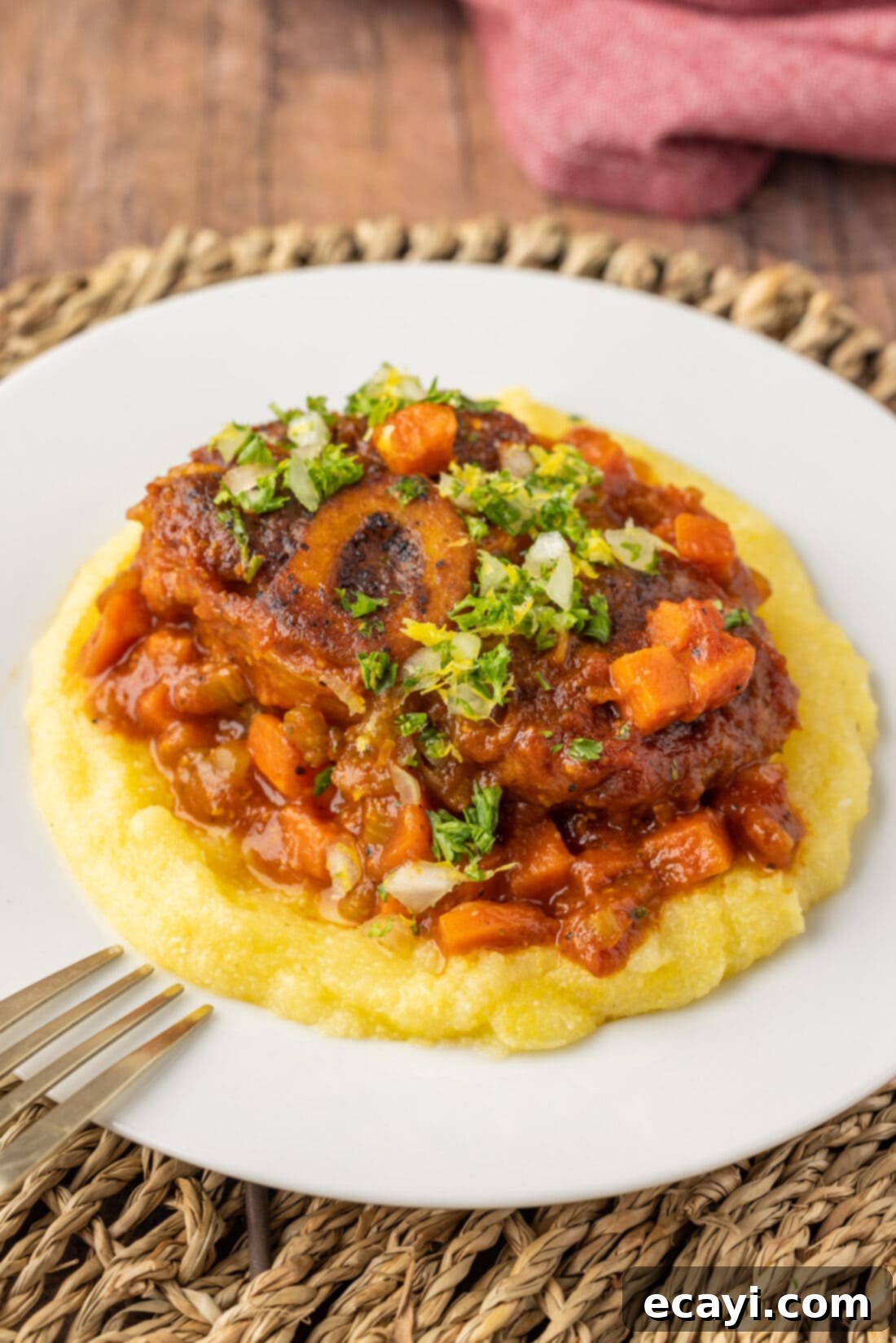
Essential Ingredients for Perfect Veal Osso Buco
To embark on this culinary journey, gather the following key ingredients. You’ll find a detailed list with precise measurements and comprehensive instructions in the printable recipe card at the conclusion of this post.
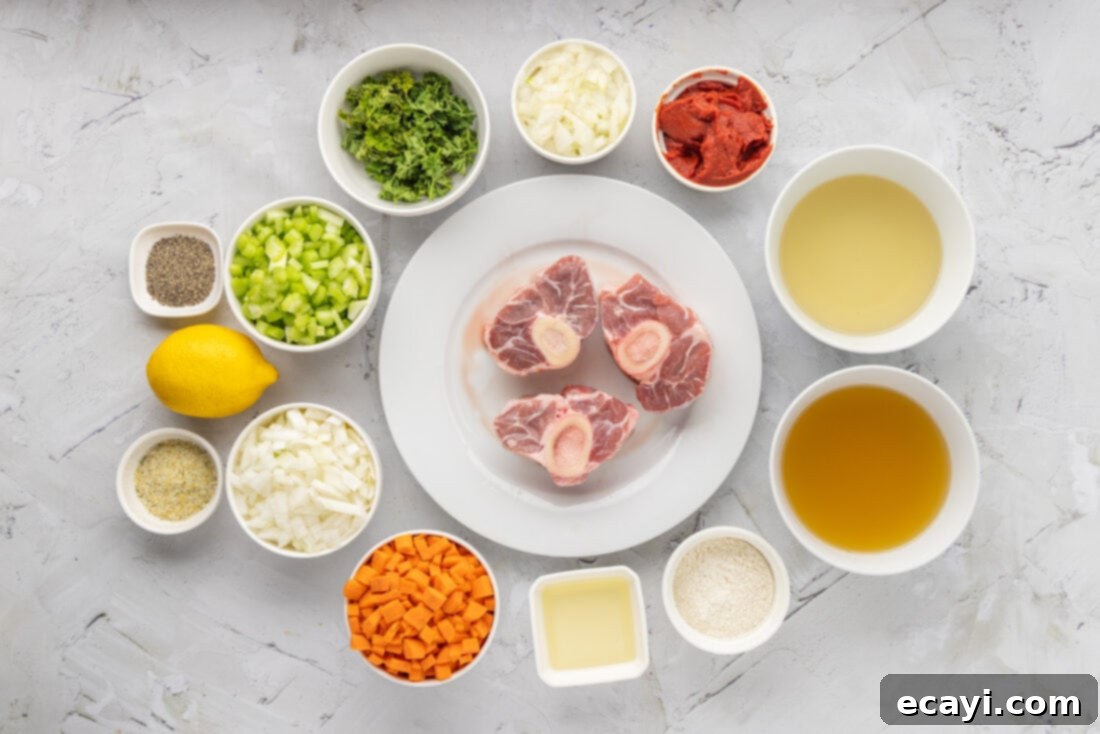
Ingredient Spotlight & Expert Substitutions
Let’s dive deeper into the components that make this Veal Osso Buco truly shine:
- VEAL SHANKS – The star of our dish, veal shanks are cross-cut from the leg, typically yielding a round slice of meat with a bone in the center containing precious marrow. This cut is known for being tougher than other veal cuts, which makes it absolutely ideal for slow braising. The extended cooking time at a low temperature is crucial, allowing the abundant connective tissues to render into gelatin, which in turn creates that sought-after “fall-off-the-bone” tenderness and contributes incredible richness and body to the sauce. When selecting your shanks, look for cross-cut pieces, ideally weighing around 1 to 1 1/4 pounds each. Ensure they have a good amount of meat and a visible bone, as the marrow is key to the authentic Osso Buco experience.
- GARLIC SALT & BLACK PEPPER – These foundational seasonings enhance the veal’s natural flavor. We divide the seasoning, using some for the initial veal preparation and reserving the rest to season the vegetables, ensuring layers of flavor throughout the dish. You can adjust the quantity to your preference, or use separate garlic powder and salt if preferred.
- ALL-PURPOSE FLOUR – A light dusting of flour serves multiple purposes. It helps create a beautiful brown crust during searing, contributing to the Maillard reaction which deepens flavor. More importantly, as the shanks braise, the flour thickens the cooking liquid, transforming it into a luxurious, clingy sauce.
- OLIVE OIL – Essential for searing the veal shanks and sautéing the aromatic vegetables. Use a good quality extra virgin olive oil for the best flavor foundation.
- AROMATIC VEGETABLES (ONION, CELERY, CARROTS) – Often referred to as a “mirepoix” in French cuisine, this classic trio forms the flavor base of our Osso Buco. Diced finely, these vegetables sweeten and deepen the sauce as they cook down, providing a complex aromatic backdrop for the veal.
- TOMATO PASTE – This concentrated tomato product is a powerhouse of umami. It adds a rich, savory depth and a beautiful reddish-brown color to the braising liquid. Don’t skip the step of cooking it briefly with the vegetables to develop its flavor even further.
- CHICKEN STOCK – The primary liquid for braising. A good quality, low-sodium chicken stock allows you to control the seasoning of your final dish. Beef broth can also be used for an even richer, darker sauce, though chicken stock is common in many Osso Buco recipes to keep the veal flavor distinct.
- DRY WHITE WINE – White wine, such as Pinot Grigio, Sauvignon Blanc, or a dry Vermouth, adds acidity and complexity to the sauce, helping to deglaze the pan and lift all those delicious browned bits from searing. Choose a wine you would enjoy drinking, as its flavor will concentrate in the sauce. If you prefer to avoid alcohol, you can substitute with additional chicken stock, though some depth of flavor will be missed.
For the Gremolata:
- FRESH PARSLEY – Flat-leaf Italian parsley is preferred for its robust, fresh, and slightly peppery flavor. It provides a vital herbaceous note.
- ONION (DICED) – Traditionally, gremolata calls for garlic. In this version, finely diced onion offers a milder allium bite and a different textural element that complements the rich sauce without overpowering it.
- LEMON ZEST – The bright, aromatic oils from lemon zest are crucial. They provide a zingy, fresh citrus note that cuts through the richness of the braised veal and enlivens the entire dish, creating a perfect balance of flavors.
Mastering the Art of Veal Osso Buco: Step-by-Step Guide
These step-by-step photos and instructions are designed to help you visualize each stage of making this exquisite recipe. For a complete, printable version with all measurements and instructions, simply Jump to Recipe at the bottom of this post.
- Preheat your oven to 325°F (160°C). This low and slow temperature is key for tenderizing the veal shanks without drying them out, allowing the flavors to meld beautifully over time.
- Generously season the veal shanks with a portion of the garlic salt and black pepper. Be sure to rub the seasoning evenly over all surfaces of the meat. Remember, you will not use all of it now; reserve the remaining seasoning for a later step to flavor the vegetables. This layering of seasoning ensures depth in the final dish.

- Lightly dredge the seasoned veal shanks in all-purpose flour. This means lightly coating each piece of meat, shaking off any excess. The flour crust will aid in browning and contribute to thickening the sauce later. You will likely have some flour remaining in the dish after dredging. Keep it aside if needed for other recipes, but it won’t be used again here.

- Heat the olive oil in a heavy-bottomed Dutch oven over medium-high heat until it shimmers. Carefully add the floured veal shanks to the hot oil, ensuring not to overcrowd the pan (work in batches if necessary). Sear on all sides until a rich, golden-brown crust forms. This crucial step, known as the Maillard reaction, develops deep, complex flavors that will form the backbone of your sauce. Once seared, remove the meat from the Dutch oven and set it aside on a plate.


- Reduce the heat to medium. To the flavorful oil remaining in the pan (along with any browned bits from searing), add the diced onion, celery, and carrots. Stir everything together, scraping up any fond (browned bits) from the bottom of the pan, as these are packed with flavor. Add the reserved garlic salt and black pepper. Cook for 5-6 minutes, stirring occasionally, until the onions become translucent and the vegetables begin to soften. This step builds the aromatic base of your Osso Buco.

- Add the tomato paste to the cooked vegetables and stir well to combine. Cook for 1-2 minutes, stirring continuously, to deepen its flavor and color. This step enhances the umami in your sauce. Next, pour in the chicken stock and dry white wine. Stir vigorously to combine all ingredients, ensuring any remaining browned bits are scraped from the bottom of the pot—this is called deglazing and adds immense flavor. Bring the mixture to a gentle boil.



- Once boiling, turn off the heat. Carefully return the seared veal shanks to the pan, nestling them into the rich liquid and vegetables. Ensure the meat is mostly submerged in the braising liquid. The shanks should fit snugly in a single layer if possible. This ensures even cooking and absorption of flavors.


- Cover the Dutch oven tightly with its lid and carefully transfer it to the preheated oven. Bake for a minimum of 2 hours. After 1 1/2 hours, it’s wise to check the liquid level. If it appears to be cooking down too rapidly or if the shanks are becoming exposed, you can add another 1/2 cup (or more) of chicken stock to maintain adequate moisture. The goal is for the liquid to gently simmer and reduce, creating a thick, luxurious sauce similar to a stew by the end of the cooking time. The long, slow braise allows the meat to become incredibly tender and flavorful.

- While the Osso Buco is braising, prepare the bright and zesty gremolata. Finely chop the fresh parsley and onion into very small, uniform pieces. Transfer them to a small bowl or keep them on the cutting board. Add the vibrant lemon zest, ensuring you only get the yellow part, avoiding the bitter white pith. Using a sharp knife, chop all three ingredients together until they are well combined and finely minced. This creates a powerful aromatic garnish. Once the veal is ready, serve it warm directly from the oven, topping each portion with a generous sprinkle of the freshly made gremolata. The contrast in flavors and textures is exquisite!


Frequently Asked Questions & Expert Tips
Leftover veal osso buco, with its rich sauce, stores exceptionally well. Allow it to cool completely before transferring it to an airtight container. Keep it refrigerated for up to 4 days. In fact, many believe that the flavors deepen and improve overnight, making it an excellent dish for meal prepping or enjoying the next day.
Absolutely! While traditionally made with veal, beef shanks (often labeled as beef soup bones or cross-cut shanks) make a fantastic substitute, creating a dish known as “Beef Osso Buco.” The cooking time may need to be slightly longer, typically 2.5 to 3 hours, as beef shanks can be a bit tougher than veal. The resulting flavor will be richer and more robust, but still incredibly tender and delicious.
For Osso Buco, a dry white wine is preferred. Good options include Pinot Grigio, Sauvignon Blanc, or an unoaked Chardonnay. Avoid sweet wines, as they will alter the savory profile of the dish. Choose a wine you enjoy drinking, as its quality will directly influence the flavor of your sauce. If you prefer to omit alcohol, an equal amount of good quality chicken or beef stock can be used, though the wine adds a unique depth and acidity that is hard to replicate.
Yes, Osso Buco is an ideal make-ahead dish! The flavors deepen and meld beautifully after a day or two in the refrigerator. Prepare the entire dish, let it cool, then refrigerate in an airtight container. To reheat, gently warm on the stovetop over low heat, or in the oven at 300°F (150°C), adding a splash of stock or water if the sauce is too thick. Prepare the gremolata fresh just before serving to ensure its vibrant flavor.
If your sauce is too thin after the veal is cooked, remove the shanks, cover them to keep warm, and return the Dutch oven to the stovetop. Bring the sauce to a simmer over medium heat and reduce it until it reaches your desired consistency. If the sauce is too thick, simply whisk in a little extra chicken stock or water until it thins out to your preference.
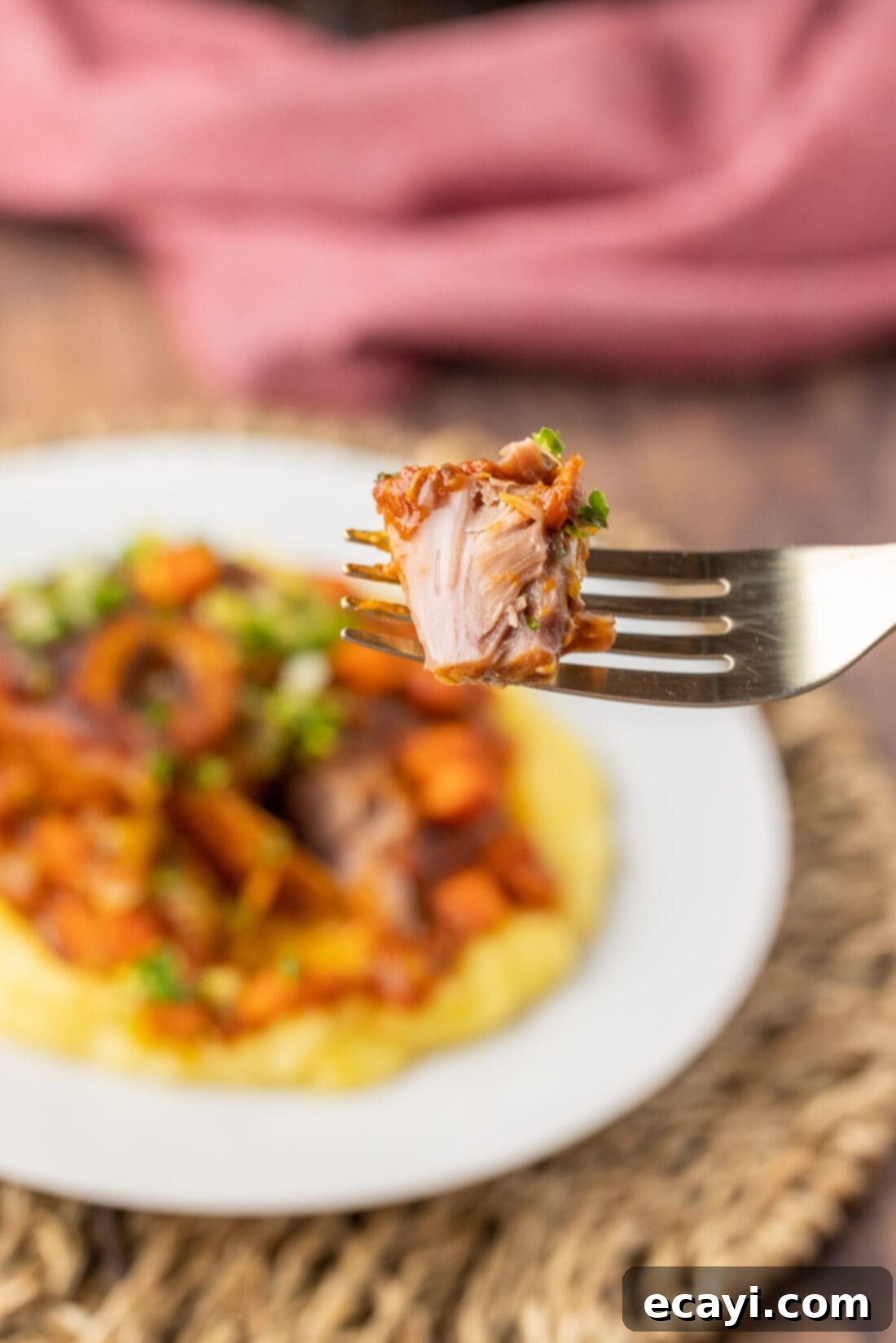
Elevate Your Meal: Serving Suggestions for Veal Osso Buco
Veal Osso Buco is a hearty and complete meal on its own, but its rich sauce begs for a complementary side that can soak up every last drop. Traditionally, this magnificent dish is served over creamy polenta or a luxurious risotto (we highly recommend trying our cauliflower risotto for a lighter, yet equally satisfying option). The creamy texture of these sides provides a perfect foil to the tender meat and savory sauce.
However, the possibilities don’t end there! For a more classic comfort food approach, mashed potatoes are an excellent choice, offering a smooth base for the rich sauce. You could also serve it alongside some al dente pasta, such as tagliatelle or pappardelle, allowing the wide noodles to generously capture the flavors. To round out your meal, consider pairing it with a simple green salad dressed with a light vinaigrette to provide a fresh contrast, or some roasted seasonal vegetables like asparagus, green beans, or glazed carrots. Always remember to garnish generously with the bright, herbaceous gremolata just before serving; its zesty punch is essential for the authentic Osso Buco experience. Enjoy this truly unforgettable dish warm, straight from the oven, and savor every exquisite bite!
More Braised & Slow-Cooked Delights
If you’re a fan of the rich, comforting flavors of slow-cooked meats, explore some of our other cherished recipes:
- Pan-Seared Veal Chops with Creamy Mushroom Sauce
- Classic Veal Piccata with Lemon Caper Sauce
- Hearty Braised Beef Shanks with Root Vegetables
- Traditional French Beef Bourguignon
- Elegant Lollipop Lamb Chops with Mint Sauce
I absolutely adore spending time in the kitchen, experimenting with new recipes, and sharing my culinary discoveries with all of you! It can be challenging to remember to check back every day for new content, which is why I’ve made it easy for you. I offer a convenient newsletter that delivers a brand-new recipe straight to your inbox every time one posts. Simply subscribe today and start receiving your free daily recipes, ensuring you never miss out on delicious inspiration!
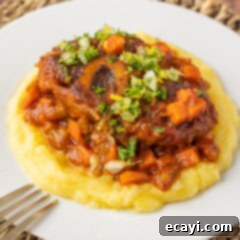
Veal Osso Buco
IMPORTANT – There are often Frequently Asked Questions within the blog post that you may find helpful. Simply scroll back up to read them!
Print It
Pin It
Rate It
Save ItSaved!
Ingredients
- 1 ¼ pound veal shanks cross cut veal shanks, about 3 pieces
- 1 Tablespoon garlic salt divided
- 1 teaspoon black pepper divided
- ¼ cup all purpose flour
- 3 Tablespoons olive oil
- 1 cup celery diced
- 1 cup onion diced
- 1 cup carrots diced
- 6 ounces tomato paste
- 1 cup chicken stock
- ¾ cup dry white wine such as Pinot Grigio or Sauvignon Blanc
Gremolata
- ½ cup parsley fresh, finely chopped Italian flat-leaf
- ¼ cup onion finely diced, or substitute with minced garlic for traditional gremolata
- 2 Tablespoons lemon zest freshly grated from organic lemons
Things You’ll Need
-
Heavy-Bottomed Dutch oven (at least 5-quart)
-
Optional: Vinyl gloves for handling raw meat
-
Sharp Chef’s knife and cutting board
-
Microplane or fine grater for lemon zest
Before You Begin
- Veal Osso Buco is traditionally served over creamy polenta or rich risotto, but also pairs wonderfully with mashed potatoes or wide pasta noodles.
- Store leftover Osso Buco in an air-tight container in the refrigerator for up to 4 days. The flavors often deepen beautifully overnight.
- To freeze, cool completely, then transfer to freezer-safe containers. It can be frozen for up to 3 months. Thaw in the refrigerator overnight before reheating gently on the stovetop or in the oven.
Instructions
-
Preheat your oven to 325°F (160°C).
-
Season the veal shanks generously with about half of the garlic salt and black pepper, ensuring an even coating. Reserve the remaining seasoning.
-
Lightly dredge the seasoned shanks in all-purpose flour, shaking off any excess.
-
Heat olive oil in a Dutch oven over medium-high heat until shimmering. Add veal shanks (in batches if needed) and sear on all sides until a beautiful brown crust is formed. Remove the meat and set aside.
-
To the remaining oil in the pan, add the diced onion, celery, carrots, and the rest of the reserved garlic salt and black pepper. Stir well and cook for 5-6 minutes until the onion is translucent and vegetables soften.
-
Stir in the tomato paste and cook for 1-2 minutes. Then, add chicken stock and dry white wine, stirring to combine and scrape up any browned bits from the bottom. Bring the mixture to a boil. Turn off the heat and return the seared veal shanks to the pan, nestling them into the liquid.
-
Cover the Dutch oven tightly and place it in the preheated oven. Bake for 2 hours. Check the liquid level after 1 1/2 hours; if it’s reducing too quickly, add an additional 1/2 cup or so of chicken stock. The final sauce should be thick and rich, like a stew.
-
While the Osso Buco finishes cooking, prepare the gremolata: finely chop fresh parsley and onion (or garlic). Add lemon zest and chop everything together until well minced. Serve on top of the warm Osso Buco.
Nutrition
The recipes on this blog are tested with a conventional gas oven and gas stovetop. It’s important to note that some ovens, especially as they age, can cook and bake inconsistently. Using an inexpensive oven thermometer can assure you that your oven is truly heating to the proper temperature. If you use a toaster oven or countertop oven, please keep in mind that they may not distribute heat the same as a conventional full sized oven and you may need to adjust your cooking/baking times. In the case of recipes made with a pressure cooker, air fryer, slow cooker, or other appliance, a link to the appliances we use is listed within each respective recipe. For baking recipes where measurements are given by weight, please note that results may not be the same if cups are used instead, and we can’t guarantee success with that method.
